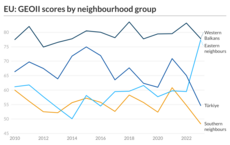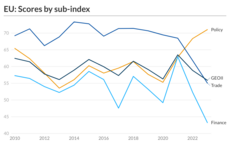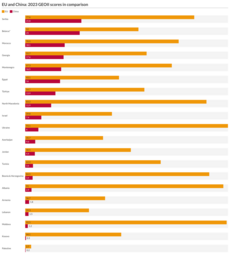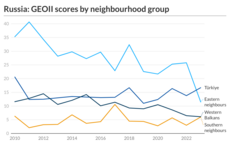The Geoeconomic Interconnectivity Index
In today’s European neighbourhood, trade, investment, and economic policy have become deeply entangled with geopolitical competition — involving the EU, the United States, China, and Russia as leading geoeconomic actors. The Geoeconomic Interconnectivity Index brings together a wide range of indicators across trade, investment, and economic policy in an accessible, comparable format. Covering the years 2010 to 2023, it provides a clear picture of evolving patterns of economic engagement.
The Index is designed to support timely and informed debate on the EU’s external policies — offering insights that matter in a geoeconomic age.







